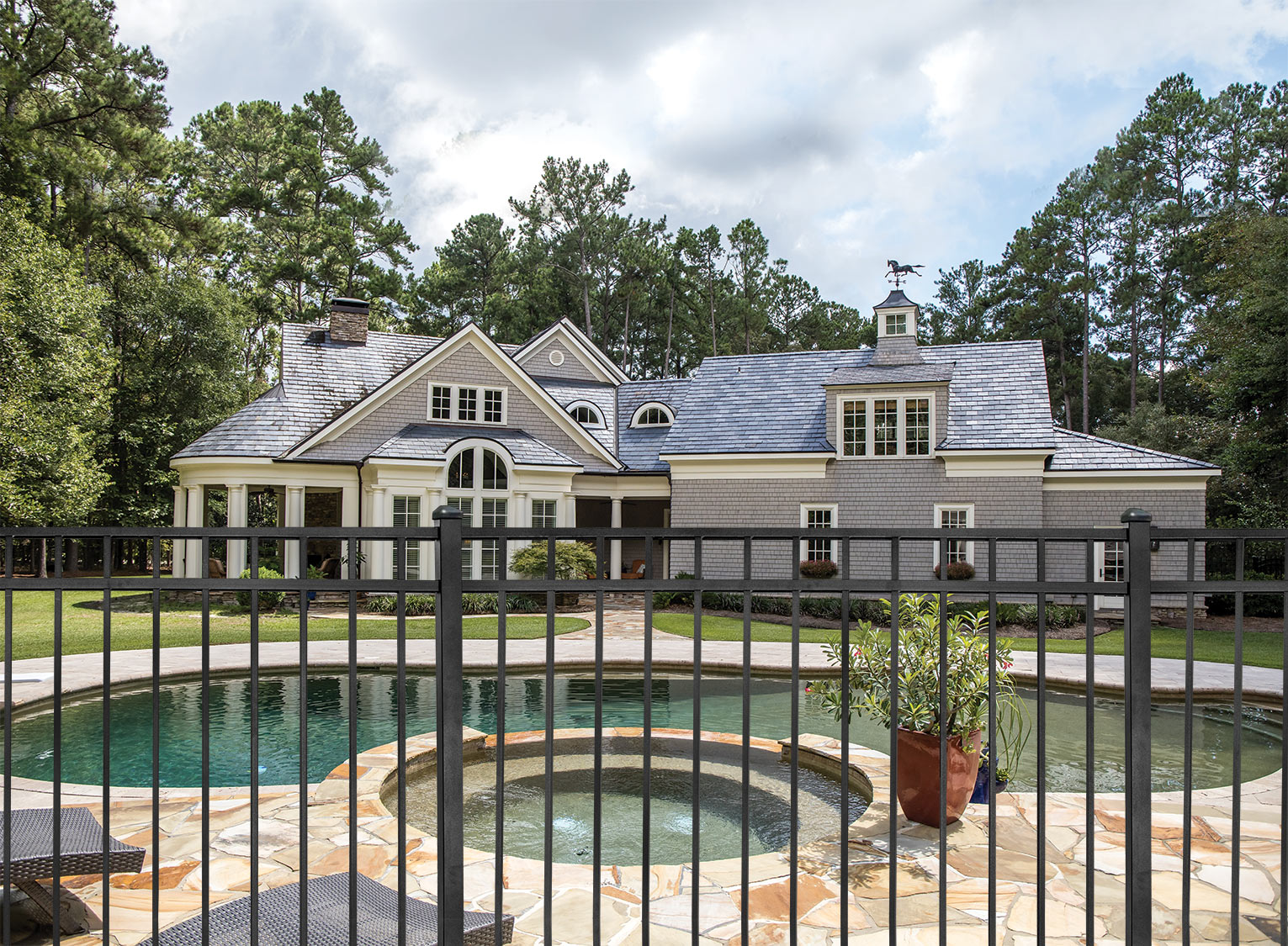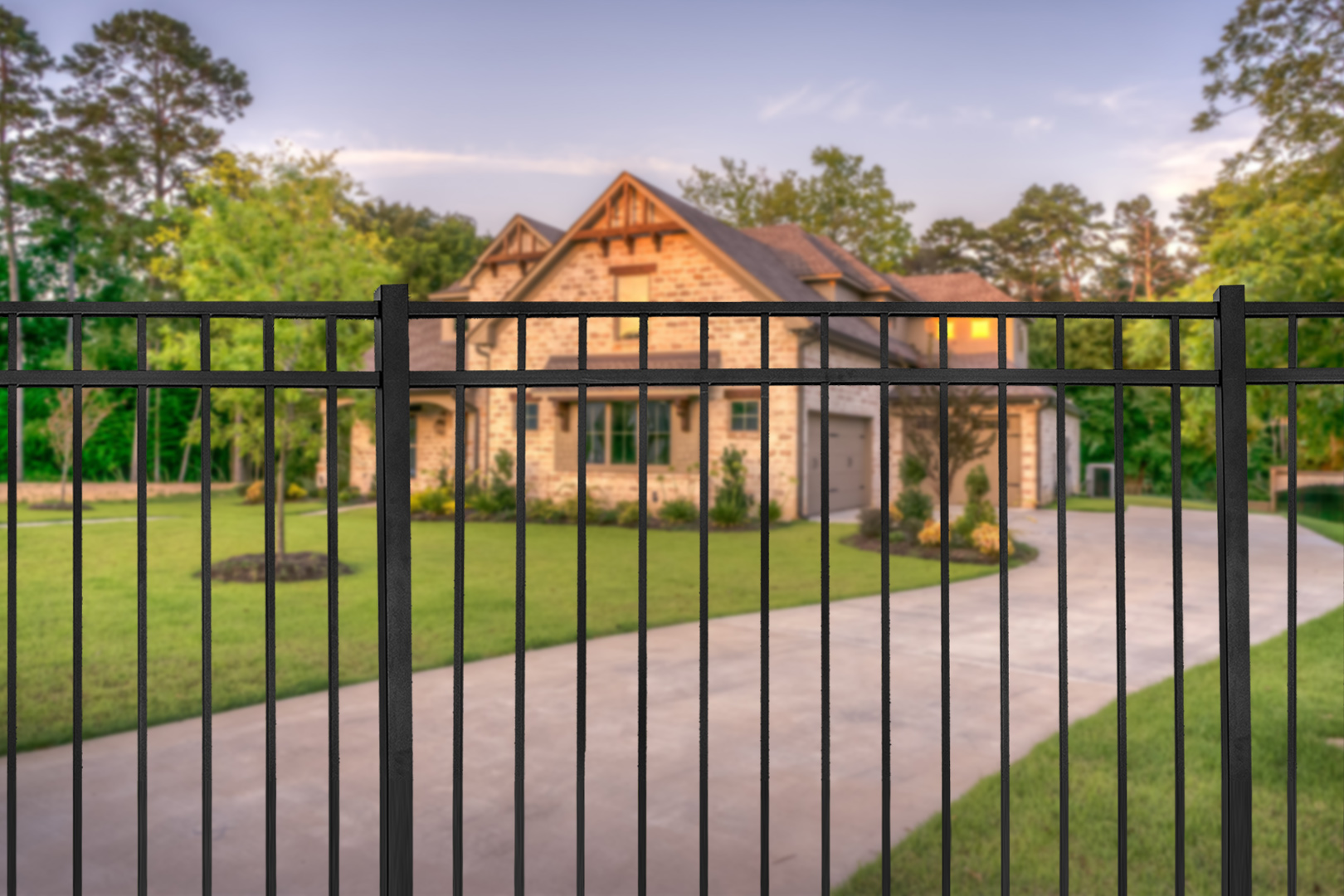╳

Get The Latest On Our Greatest
Subscribe to Our Company/Product Updates

Tuesday, September 20, 2022
Fences serve many functions. They can act as barriers to protect your property. They can keep children and pets away from potentially dangerous areas like pools or high drops. Available in a variety of styles, fences can also help define the aesthetics of your outdoor living space.
In addition to a fence’s visual appeal and safety factor, it’s important to consider its impact on the environment. For instance, a 100-foot wood fence built at 6 feet high will consume about 10 mature trees. It may take a combined 600 years to grow those 10 trees back. Plus, since treated lumber is neither compostable nor recyclable after its service life, this material may end up in a landfill after a few years. And if the lumber isn't sustainably sourced, the impact on the environment can be even greater.
Due to their recycled content, wood-alternative fencing materials may be able to offer a more eco-friendly fence option. Plus, their minimal maintenance needs and ability to be recycled means they’ll continue to be the more sustainable fencing choice throughout their service life and beyond.
One of the primary indicators of a fencing material’s eco-friendliness is its ability to be made from recycled materials.
Wood fencing, as illustrated in the example above, requires huge amounts of natural resources to create, so if the wood is not FSC certified it can create a sizeable strain on the planet. And because even the most well-kept wood fence will need replacing, this process will be repeated every few years for as long as a wood fence is used in a given location.
On the other hand, fencing made from steel is recycled and fully recyclable, reducing the resources (like energy and water) needed to produce them. Further, steel is an extraordinarily durable material that lasts for many years—so the recycled materials used to produce steel fences can help them last for decades. Aluminum is another material that’s a great option for sustainable fencing. Like steel options, aluminum fencing is often made of recycled and recyclable materials without sacrificing anything in terms of durability or aesthetic appeal.
Because wood is a natural material, it would be easy to assume that its use would be good for the earth. That assumption, though, disregards the toxic chemicals that must be added to wood to protect it from insects, moisture damage and the growth of microorganisms.
Whether added before installation or during routine upkeep, these chemicals can end up in ground water, harming the local ecosystem. Plus, they render the wood unable to be recycled.
High-quality steel fencing and aluminum fencing, on the other hand, only need soap and water for their routine maintenance, which helps keep toxic chemicals out of the local water supply. This makes steel and aluminum easier to maintain as a homeowner and better choices for ecofriendly fencing.
Another key factor in determining what kind of fence is best for the environment is their contribution to a circular economy: a model in which natural resources are made into products that last longer and can be repurposed or recycled into other products in an ever-repeating cycle.
Aluminum fencing is a great sustainable fencing option that contributes well to circular economy. While wood fences need to be replaced every 10 years or so, select aluminum fences are backed by lifetime warranties. Then, even after decades of service, aluminum fencing—along with steel fencing—can be recycled into another long-lasting product, continuing the cycle.


When choosing a fencing material for its sustainability, it’s important to examine its impact on the environment throughout its lifecycle—from how resource-intensive it is to produce to the environmental impact of its upkeep, to its longevity and viability as a recyclable material. In each of these areas, options like steel and aluminum offer a superior choice to traditional wood fencing.
Fortress® is passionate about supporting practices and materials that protect our planet. That’s why we offer eco-friendly wood-alternative outdoor building products, harness the renewable energy of solar power during the manufacturing process and use packaging methods that reduce Styrofoam.
Whether you’re planning to install sustainable fencing or using green building materials to create your dream deck, Fortress wants to partner with you to fortify the future.
Search